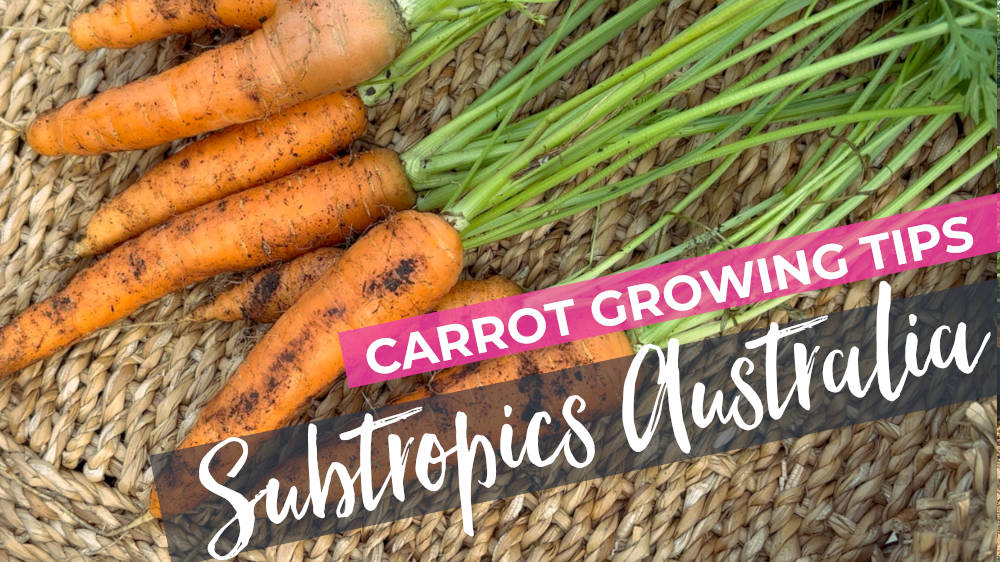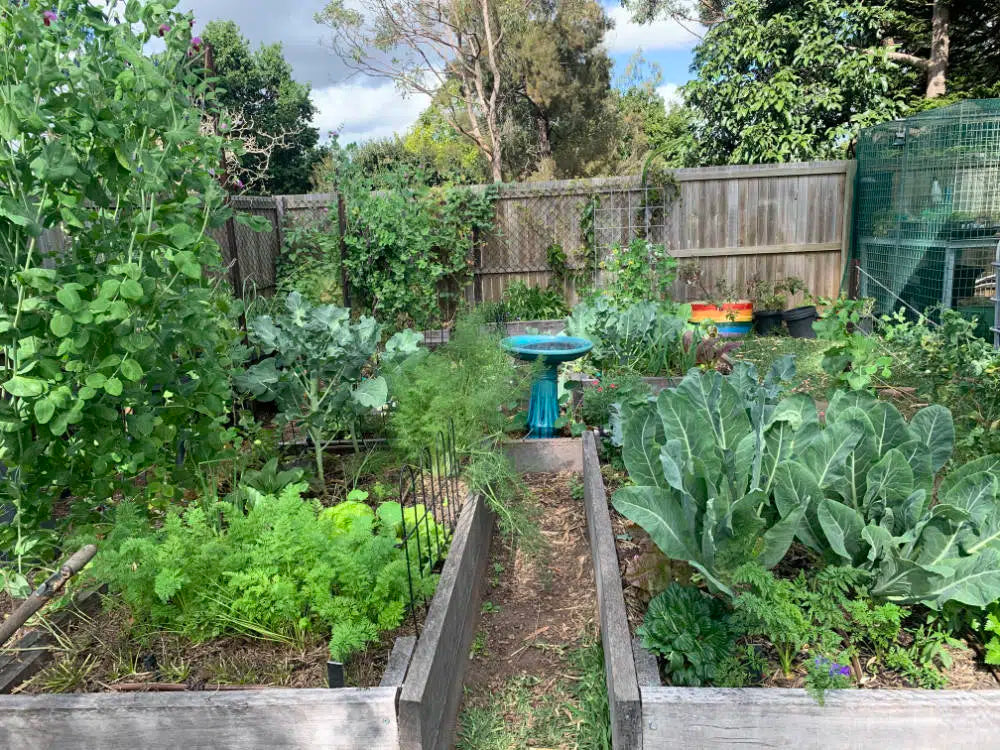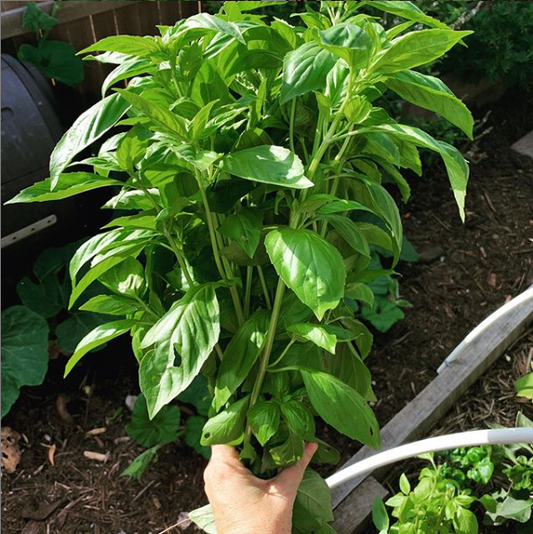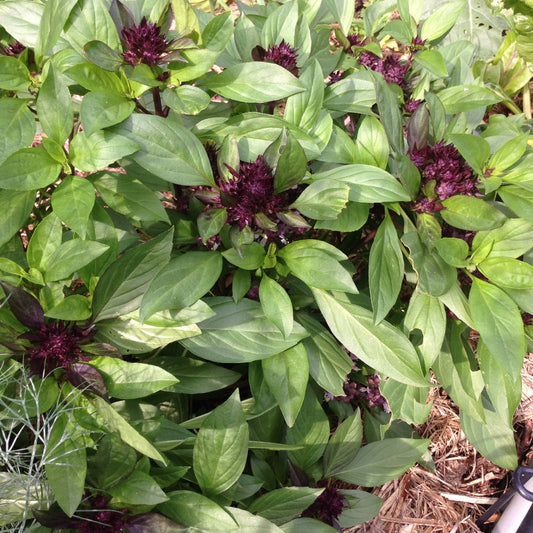I have a love hate relationship with growing carrots, for one they are so cheap to buy it’s hard to justify giving up the space in our small garden to grow them. But on the other hand they are such a satisfying crop to grow, not to mention the fun types that you can get to grow.
If you’re new here I am Nicki and I am on a mission to grow as much food as I can on our regular suburban block in South East Queensland Australia.
It’s now carrot season for us here in Subtropical Queensland Australia and I know some people find them a challenging one to grow so I thought I’d share my carrot growing tips for backyard gardeners.
The most common issue I see with people growing carrots is they’re not getting enough sunlight. And usually it’s more to do with neighbouring plants shading them out than not choosing the right location. I like to prioritise my full sun beds for my root crops, you’ll usually see me planting them on the edges and any crops I grow nearby need to be fast growing, like radish, lettuce or asian greens.
If you grow like me in raised beds with a lot of organic matter, growing carrots should be pretty simple. If however you’re working with compacted soil with loads of rocks you might struggle to find success. I’d suggest adding more organic matter to your beds, perhaps build up a no dig lasagne style. In terms of amendments, aside from compost I like to add woodash and bone meal into my beds for carrots.
Carrots really need to be planted by seed, essentially a carrot is just a big tap root, so if you accidentally bend that root while transplanting you’re going to get wonky carrots.
I think the most challenging part about growing carrots is getting them to germinate. You cannot allow them to dry out otherwise they won’t sprout, this can be hard when the weather is still warm. I usually cover my carrot seeds with a good quality seed raising mix that helps retain the moisture. I’ve also tried vermiculite, sometimes I even cover with a piece of shade cloth and I have heard of people using a bit of time to cover them to keep the soil nice and damp. I try to time carrot planting with rain if I can, failing that leaving a watering can right next to the bed to remind me every time I walk by is a good strategy.
To plant my seeds I just make a little channel and i usually fill it with a good quality seed raising mix, then i sprinkle my seeds quite densely. I always use mycorizhae when planting my carrot seed to give them added boost. I then simply cover them up lightly with remaining seed raising mix.
I think choosing variety is also important as some varieties of carrots can take a while. I like to choose ones that are fast growing, like the short kuroda, paris market or scarlet nantes. I like these ones as well because they are bright in colour which means if you’re picking as baby carrots they will be more vibrant. The other one we love is a cosmic purple which is purple on the outside and then rings of orange on the inside.
When I sow my seeds I sow them quite densely and then I do 2 runs of thinning. The first I do when the seedlings are around 3 weeks old and have formed their first set of true leaves. I thin them out to around 2cm apart using a pair of scissors. Don’t waste the thinnings, they make a nice little salad topper.
The second thinning I do is technically baby carrot harvesting, where I pull every second one. Depending on the variety and how well they are growing, this is usually around the 8 week mark. This will allow the remaining carrots to really stretch out, and I get a decent feed of baby carrots.
I don’t do anything special in terms of maintenance with carrots, I generally don’t treat them differently from anything else I am growing. Just giving them regular seaweed emulsion feeds as they grow, which is more of a tonic than a fertiliser. I usually lay off anything stronger than that though, if you’re using a high nitrogen liquid fertiliser that is designed for growth you may find the carrots focus more on leaf development than root development. I find having lettuce or asian greens nearby can help keep it in balance.
Some common issues as I mentioned are too many leaves and no roots. You might be fertilising too much, but this can also be an issue with not enough sun.
Root knot nematodes can also be a pain, it can be identified as little nodules on the carrots, they generally slow the growth. They’re tricky to get rid of once you have them but loads of organic matter, biofumigation cover crops, crop rotation and working on improving your soil biology is your best option.
Carrots will split when they get too much water - particularly when they are close to harvest. Carrots that fork can be due to an obstacle in their way, or even too much nitrogen.
Carrots love cooler weather, and they will be sweeter and often bitter if it’s too hot. It’s why we save our carrot growing over the cooler months.
Anyway that’s my tips for growing carrots. I hope you found it helpful, thank you so much for watching and I’ll see you guys next time.







